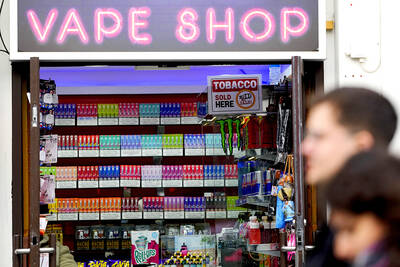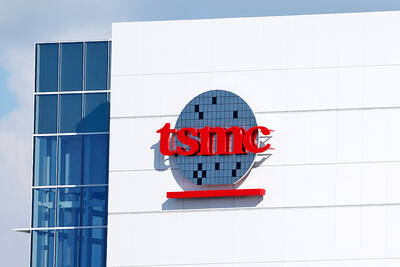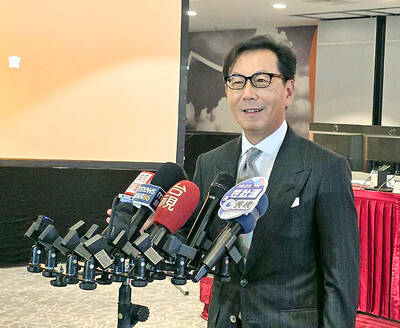Vietnam is best placed to benefit from the diversion of investment out of China, while Thailand and Singapore are also likely key beneficiaries, Australia and New Zealand Banking Group Ltd (ANZ) said yesterday.
The ongoing US-China trade spat has underlined the risk of concentrating production bases in a single country and is triggering supply chain reorganization, the bank said.
Vietnam stands out as the best performer in terms of labor costs, capability, trade facilitation, political stability and existing operations or industrial clusters, ANZ said.
A recent survey of US firms in China showed that one-third had either moved or were considering moving some production abroad amid the trade tensions, it said.
A separate survey of foreign companies from other countries found that half were considering relocation and Southeast Asia was their top choice, ANZ said.
Cheaper labor costs lend support to migration, and as a survey by the Japan External Trade Organization showed, the cost of hiring manufacturing industry workers in most Asian economies is lower than that in China, with Taiwan, Singapore and South Korea being the exceptions, ANZ said.
The availability of a skilled labor force would also carry significant weight, especially for businesses operating in sectors higher up the value chain, it said.
Singapore is the region’s strongest performer based on the World Economic Forum’s Global Human Capital Index, which ranks economies by education attainment, education quality, labor force participation and the availability of skilled employees, the bank said, adding that Vietnam and Indonesia are also in the top half of the list.
A robust supply chain infrastructure, which enables cost-effective and timely delivery of products to customers, is important, ANZ said
Singapore ranks high globally in the World Bank’s Logistics Performance Index, which grades economies on their customs efficiency, infrastructure, logistics services, timeliness, reliability and cost, the bank said.
Taiwan, Thailand, Vietnam and Malaysia are not far behind China and are in the top 25 percent of countries graded on the index, it said.
Participation in free-trade agreements (FTAs) would also add to an economy’s attractiveness as a production base as these pacts reduce or remove trade barriers, ANZ said.
Singapore leads the pack with the number of FTAs is has secured, while Taiwan, the Philippines, Laos, Cambodia and Myanmar are lagging behind, ANZ said.
The presence of existing industrial clusters would be a plus, as the bulk of the supporting infrastructure and networks would already be in place, the bank said.
Vietnam’s political stability and improvements in its human capital and logistics network make it an increasingly attractive manufacturing hub, ANZ said, adding that Vietnam’s participation in major FTAs is also a big draw.
A growing number of companies have announced plans to ramp up production in Vietnam or invest there, ANZ said.
Samsung Electronics Co, which is Vietnam’s top foreign investor and contributes close to a quarter of the country’s exports, has signaled plans to further expand its business in Vietnam.
Taiwan and South Korea are unlikely to benefit much from businesses relocating out of China because of their high manufacturing costs, ANZ said.
However, their highly skilled workforces and focus on high value-added products could make them a viable alternative production base for US firms looking to circumvent high tariffs to service the Chinese market, the bank said.

Real estate agent and property developer JSL Construction & Development Co (愛山林) led the average compensation rankings among companies listed on the Taiwan Stock Exchange (TWSE) last year, while contract chipmaker Taiwan Semiconductor Manufacturing Co (TSMC, 台積電) finished 14th. JSL Construction paid its employees total average compensation of NT$4.78 million (US$159,701), down 13.5 percent from a year earlier, but still ahead of the most profitable listed tech giants, including TSMC, TWSE data showed. Last year, the average compensation (which includes salary, overtime, bonuses and allowances) paid by TSMC rose 21.6 percent to reach about NT$3.33 million, lifting its ranking by 10 notches

Popular vape brands such as Geek Bar might get more expensive in the US — if you can find them at all. Shipments of vapes from China to the US ground to a near halt last month from a year ago, official data showed, hit by US President Donald Trump’s tariffs and a crackdown on unauthorized e-cigarettes in the world’s biggest market for smoking alternatives. That includes Geek Bar, a brand of flavored vapes that is not authorized to sell in the US, but which had been widely available due to porous import controls. One retailer, who asked not to be named, because

SEASONAL WEAKNESS: The combined revenue of the top 10 foundries fell 5.4%, but rush orders and China’s subsidies partially offset slowing demand Taiwan Semiconductor Manufacturing Co (TSMC, 台積電) further solidified its dominance in the global wafer foundry business in the first quarter of this year, remaining far ahead of its closest rival, Samsung Electronics Co, TrendForce Corp (集邦科技) said yesterday. TSMC posted US$25.52 billion in sales in the January-to-March period, down 5 percent from the previous quarter, but its market share rose from 67.1 percent the previous quarter to 67.6 percent, TrendForce said in a report. While smartphone-related wafer shipments declined in the first quarter due to seasonal factors, solid demand for artificial intelligence (AI) and high-performance computing (HPC) devices and urgent TV-related orders

STILL LOADED: Last year’s richest person, Quanta Computer Inc chairman Barry Lam, dropped to second place despite an 8 percent increase in his wealth to US$12.6 billion Staff writer, with CNA Daniel Tsai (蔡明忠) and Richard Tsai (蔡明興), the brothers who run Fubon Group (富邦集團), topped the Forbes list of Taiwan’s 50 richest people this year, released on Wednesday in New York. The magazine said that a stronger New Taiwan dollar pushed the combined wealth of Taiwan’s 50 richest people up 13 percent, from US$174 billion to US$197 billion, with 36 of the people on the list seeing their wealth increase. That came as Taiwan’s economy grew 4.6 percent last year, its fastest pace in three years, driven by the strong performance of the semiconductor industry, the magazine said. The Tsai